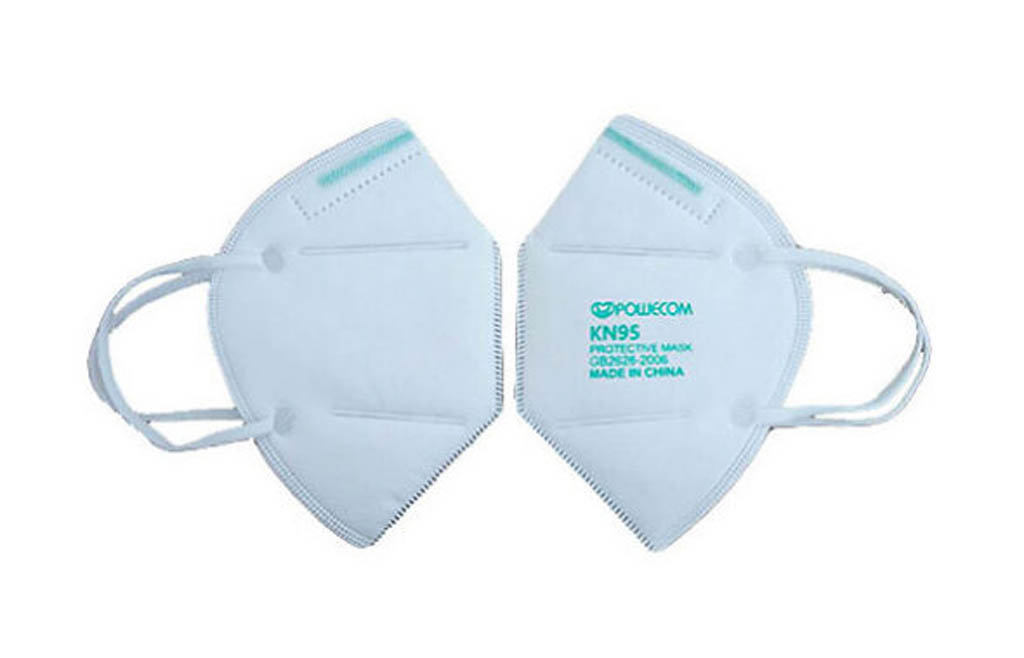
For the many who agree with the science showing that mask wearing stops or slows the spread of coronavirus, it can feel futile to keep trying to convince non-maskers to mask up. Cloth and surgical masks do not protect the wearer—they only protect others from the wearer. This is why some have tried to get everyone to wear them: you keep me safe, I keep you safe. But that conversation, in many instances, is a dead end. We need to start wearing masks that protect ourselves as well as others: N95 or KN95 masks.
I was happy to learn that it’s now possible for the public to obtain KN95 masks, which DO protect the wearer. For all practical purposes, KN95s are the same as the N95s worn by healthcare pros—they just follow China’s guidelines for what constitutes a 95 mask, instead of U.S. guidelines. But the FDA says that they’re effectively the same, and even has a list of FDA-approved KN95 mask manufacturers.
Going further down the mask wormhole, I discovered that there are a number of websites that are selling fake KN95 masks. I found this out by going on the Guangzhou website of FDA-approved manufacturer Powecom, which has a “fraudulent websites” link of manufacturers to steer clear of. Anyway, I emailed Powecom, and got a link to an authorized seller here in the U.S.
Here’s the authorized Powecom site: https://bonafidemasks.com/Powecom-kn-95/. I paid $18.99 (including shipping) a week ago for a package of 10; they’re on sale now for $14.99. You can reuse them several times. Disinfect in a 160 degree oven for half an hour, or leave them in the sun for awhile, or in a paper bag for 2 days. Or if you’re a CPAP user and have a SoClean disinfecting machine for your CPAP (it uses ozone), you can stick it in there for a couple of hours.
Another KN95 FDA-approved mask is made by Respokare, which may be even more effective than the Powecom. It’s also a bit more comfortable. It has four layers, including polypropylene (which generates static electricity, killing viruses & bacteria) and a layer with copper and zinc ions to kill microorganisms (no real research on this second claim, but definitely published research on polypropylene). It costs more than five times as much as the Powecom at $10 a mask, but is worth it, in my opinion. Here’s where to buy it: https://n95maskco.com/collections/n95-masks?sscid=81k4_s91bk& . And here’s a YouTube review by a board-certified pulmonologist whom I’ve found to be a reliable source of science-based medical info: https://www.youtube.com/watch?v=t7cVsWBfupE&t=430s.
Personally, I’ve found the Respokare mask to be a bit small. As a result, it slips down (and even off) my nose while I’m talking. Some others have reported the same problem. It’s higher quality, but it may only be suitable for people with small faces.
I have tested both of these masks with a fingertip pulse oximeter for over half an hour each, and my blood oxygen levels stayed high at 97-98 percent. I did the same with my cloth masks, same result. People worried about health conditions that preclude safe mask wearing due to blood oxygen levels can certainly rest assured they’ll be able to breath just fine.
You can tell when a mask is sealing well because when you breathe in, the sides of the mask collapse, and when you breathe out, the sides puff back out, showing no leakage around the edges, top or bottom, with all air coming through the filtered part in both directions.
For those who have to wear masks for prolonged periods of time, there has been sporadic, if inconclusive and conflicting evidence that wearing an N95 for a full day without a break can cause small drops in oxygen levels—still above 90 percent oxygen saturation, but for some, low 90s rather than high 90s. If so, this could be caused by the mask becoming damp after many hours. So if you are someone who must wear a mask all day for work, it would not be a bad idea to get a pulse oximeter and see if this is a problem. The solution seems to be to take some short breaks (preferably outside) during the day, and to change your mask after a few hours. Whatever you do, don’t take your mask off in the bathroom; these enclosed spaces have been found to have high viral levels.
I hope this is a helpful resource for those who feel disempowered and unsafe putting their wellness in the hands of others.
